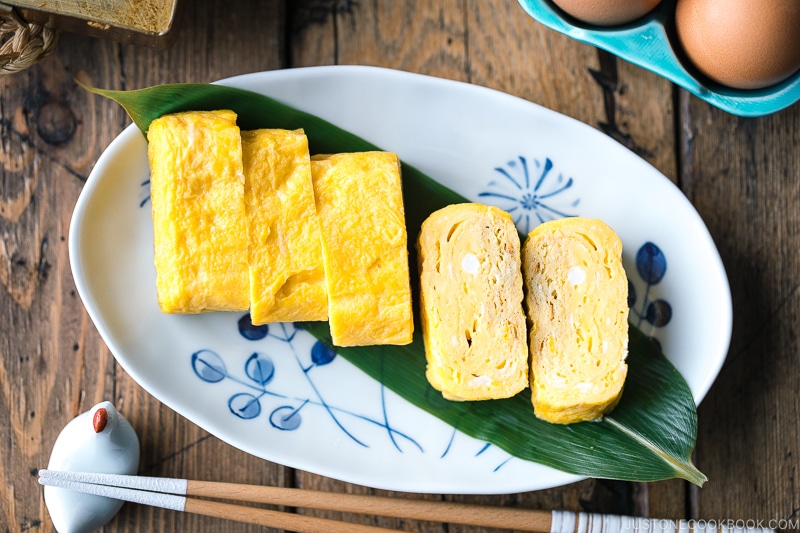Japanese Tamago Egg: Delicious Recipes, Nutritional Benefits, and Versatile Uses in Cuisine
Tamago, often referred to as tamagoyaki, is a traditional Japanese sweet omelette. It consists of eggs, sugar, soy sauce, and sometimes mirin (sweet rice wine). The preparation involves cooking the egg mixture in a rectangular pan, layering it thinly, and rolling each layer into a cylindrical shape. The result is a light, fluffy, and slightly sweet omelette with a distinct taste. You might encounter tamago in sushi restaurants or bento boxes, where it adds a delightful contrast to other savory elements.
The Role of Tamago in Japanese Cuisine
Tamago plays a significant role in Japanese cuisine, offering both flavor and texture. It’s a staple in sushi, often served atop vinegared rice in nigiri form. Sushi chefs view tamago as a test of skill since achieving the right balance of sweetness and consistency requires precision. In bento boxes, tamago provides a visually appealing and nutritious element, complementing various other components. Additionally, tamago appears in various dishes like donburi (rice bowls) and as an ingredient in soups, reflecting its versatility in culinary applications.
Varieties of Tamago
Tamagoyaki
Tamagoyaki, the classic form of tamago, features layers of eggs sweetened and seasoned with soy sauce and sometimes mirin. This sweet omelette is rolled into a cylindrical shape using a rectangular pan called a makiyakinabe. Each layer contributes to the delicate texture that distinguishes tamagoyaki. It’s often included in sushi and bento boxes, where it offers a sweet contrast to savory components. Skilled sushi chefs often consider the preparation of tamagoyaki a test of their culinary expertise.
Dashimaki Tamago
Dashimaki Tamago, a savory variant of tamago, includes dashi—a Japanese soup stock made from kelp and bonito flakes. The addition of dashi enhances the umami flavor, creating a moist and fluffy texture. Like tamagoyaki, dashimaki tamago is cooked in layers, but it usually has a looser consistency due to the added liquid. This version often accompanies traditional Japanese meals and can be enjoyed on its own or as part of a larger dish. The preparation may vary slightly by region, but the essence of combining eggs and dashi remains the same.
How to Make Tamago at Home
Ingredients Needed
To make tamago at home, you need a few key ingredients. For tamagoyaki, gather eggs, sugar, soy sauce, and optionally mirin. For dashimaki tamago, you need eggs, dashi, soy sauce, and mirin. Here’s a detailed list:
- Eggs: Use 4-5 large eggs.
- Sugar: Add 1-2 tablespoons depending on desired sweetness.
- Soy Sauce: Use 1 tablespoon or adjust to taste.
- Mirin: (Optional) Add 1 tablespoon for extra flavor.
- Dashi: For dashimaki tamago, use 1/4 cup dashi.
Step-by-Step Cooking Guide
Tamagoyaki
- Prepare Mixture: Beat eggs, sugar, soy sauce, and mirin (if using) in a bowl until well-mixed.
- Heat Pan: Use a rectangular tamagoyaki pan or a small non-stick skillet over medium heat. Lightly oil the surface.
- Pour and Cook: Pour a thin layer of the egg mixture into the pan, tilting to cover the entire surface.
- Scramble Edges: Once the edges set, gently scramble them to the center.
- Roll: Carefully roll the egg layer from one end to the other. Push the rolled egg to one side of the pan.
- Repeat: Add another layer of the egg mixture to the exposed part of the pan. Lift the previously rolled egg to let the new layer flow underneath. Repeat until all mixture is used.
- Shape: Shape the final roll by pressing gently with a sushi mat or using the pan’s shape.
- Prepare Mixture: Whisk eggs, dashi, soy sauce, and mirin in a bowl until combined.
- Heat Pan: Heat a rectangular tamagoyaki pan or small non-stick skillet over medium-low heat. Lightly oil the surface.
- Pour and Cook: Pour a thin layer of the mixture into the pan, tilting to cover the surface.
- Set and Scramble: Let the layer set slightly, then gently scramble the edges towards the center.
- Roll: Roll the set egg layer from one end to the other. Push the roll to one side.
- Repeat: Add more of the mixture, lifting the rolled egg to let the new layer flow underneath. Repeat until all mixture is used.
- Shape: Shape the rolled egg by pressing gently with a sushi mat or use the pan’s shape.
By following these steps, you can create perfect tamago at home, adding authenticity to your Japanese dishes.
Nutritional Benefits of Tamago
Tamago offers an array of nutritional benefits, enhancing both flavor and health. High-quality protein found in tamago supports muscle growth and repair. Each tamago serving contains essential amino acids, contributing to overall dietary needs.
Rich in Vitamins and Minerals
Tamago is rich in vitamins and minerals, supporting various bodily functions. One serving typically provides:
- Vitamin A: Essential for vision and immune function.
- Vitamin B12: Supports nerve function and red blood cell production.
- Vitamin D: Aids in calcium absorption and bone health.
- Selenium: Protects cells from oxidative damage.
- Phosphorus: Key for bone and teeth strength.
Low in Calories
A standard serving of tamagoyaki or dashimaki tamago can be part of a low-calorie diet. With approximately 90 calories per serving, tamago offers a nutrient-dense option for those managing their caloric intake.
Good Source of Healthy Fats
Tamago provides healthy fats, including monounsaturated and polyunsaturated fats. These fats help maintain heart health by lowering bad cholesterol levels.
Antioxidant Properties
The ingredients in tamago, like dashi in dashimaki tamago, contain antioxidants. These compounds fight free radicals, reducing oxidative stress and inflammation in the body.
High in Choline
Choline, found abundantly in tamago, assists in brain development and function. It is crucial for pregnant women as it supports fetal brain development.
Digestive Health
The inclusion of dashi in dashimaki tamago introduces probiotics, which aid in digestive health. Probiotics support gut flora balance, promoting better digestion and nutrient absorption.
Tamago combines delicious taste with ample nutritional advantages, making it a valuable addition to any diet.
Using Tamago in Various Dishes
Sushi and Sashimi
Tamago plays a key role in sushi and sashimi. You’ll often find tamago nigiri, where a slice of tamagoyaki rests atop a small bed of vinegared rice, secured with a thin strip of nori. Its slightly sweet flavor complements the savory taste of other sushi ingredients like raw fish (tuna, salmon), cucumber, and avocado. In certain regional sushi preparations, tamago might even be layered within a roll for added texture and taste.
Bento Boxes and Breakfast
Tamago is a staple in bento boxes and Japanese breakfasts. Packed in bentos, tamagoyaki offers a vibrant, nutritious element. It’s usually cut into small, easy-to-eat pieces that pair well with rice, pickles, and proteins like grilled chicken or fish.
For breakfast, tamagoyaki provides a quick, protein-packed option. Often served alongside steamed rice and miso soup, tamago offers a perfect balance of savory and sweet flavors. Home cooks might also include tamago in onigiri or as a topping for toast for a more modern twist.
By incorporating tamago into these dishes, you can enjoy its versatility and unique flavor across numerous meals throughout the day.
Conclusion
Exploring the world of Japanese tamago opens up a realm of culinary possibilities. Whether you’re enjoying tamagoyaki or dashimaki tamago, these dishes bring a unique flavor and texture to your meals. Incorporating tamago into your diet not only enhances your culinary experience but also boosts your nutritional intake. From sushi and sashimi to bento boxes and traditional breakfasts, tamago proves to be a versatile and delicious addition. So, the next time you’re looking to add a nutritious and flavorful element to your meal, consider the delightful tamago egg.






